- Administrator
- Albums and Singles
 Digitally generated sound has been a staple of Scott Morgan's career as Loscil since his first release. With the project named for one of the basic operators in the popular Max/MSP software package, it is unsurprising that much of Sea Island is the result of DSP programming. However, the sound Morgan creates has a far richer, more organic quality than many who work with similar strategies and methods, and this album is one that is gripping in its natural sounding warmth.
Digitally generated sound has been a staple of Scott Morgan's career as Loscil since his first release. With the project named for one of the basic operators in the popular Max/MSP software package, it is unsurprising that much of Sea Island is the result of DSP programming. However, the sound Morgan creates has a far richer, more organic quality than many who work with similar strategies and methods, and this album is one that is gripping in its natural sounding warmth.
The moments of Sea Island that I found the most captivating were the ones where Morgan makes some concessions to standard rhythms and melody.On "Iona" he constructs mostly a thick expanse of fuzz and drone, with the occasional inclusion of a sequenced melody that makes it one of the most memorable on here.He creates a more song-like, captivating ambience on "Sturgeon Bank" by blending what almost sounds like a programmed drum pattern with a plinking passage of piano.
"In Threes" has Scott generating a thick, gauzy fog around an insistent synth throb, again working with a sense of rhythm that makes it stand out strongly.He expands upon these more conventional qualities via shards of melody and twinkling electronics.Echoing melodies delicately permeate the understated "Bleeding Ink," which becomes all the richer as what resembles processed strings and other heavily treated and mangled electronic tones are introduced.
On some of these pieces, Morgan throws out the more traditional music elements entirely and instead embraces the purity of processed sound.There is a slow repetition throughout "Catalina 1943," in which layer after layer of electronic sound is placed together to result in a rich and heavy drone.The concluding piece, "Angle of List," ends the album in a gigantic expanse of drone and tone.Nothing explicitly melodic or rhythmic is overtly noticeable, but it still results in an achingly beautiful piece of music.
Even though much of Loscil's music is generated by a computer, Scott Morgan's own technical skill and compositional ability results in a record with an undeniably organic warmth.Parts of his music are underscored by concessions to rhythm and melody, and these are the pieces I found myself coming back to.However, even those in which form is eschewed in favor of tone and texture, his beautiful and delicate touch is undeniable.
Samples can be found here.
Read More
- Administrator
- Albums and Singles
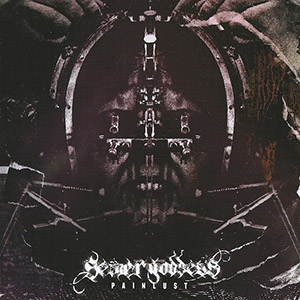 Boston’s Sewer Goddess inhabit the blurry, aggressively dark space between doom metal plod and power electronics/industrial, blending those two extreme genres in a way that works flawlessly. Those two genres are not known for anything subtle, and Painlust is anything but, resulting in an album that embraces the best elements of both of those genres while managing to avoid the cliché pitfalls that are a significant problem within both.
Boston’s Sewer Goddess inhabit the blurry, aggressively dark space between doom metal plod and power electronics/industrial, blending those two extreme genres in a way that works flawlessly. Those two genres are not known for anything subtle, and Painlust is anything but, resulting in an album that embraces the best elements of both of those genres while managing to avoid the cliché pitfalls that are a significant problem within both.
Clocking in at six tracks and a bit under a half hour, Painlust is a tight, compact album that wastes no time in its brutality.Vocalist/programmer/composer Kristen Rose has her pieces fleshed out by a full band on this album, resulting in a disc that has a more complex, realized sound compared to their prior works.The opening song "Plague Axis" has the band at their most industrial.Droning synths and feedback are mixed with depressive synth patterns, as Rose’s screams and metallic banging sound off in the distance.There is a certain lo-fi density to the mix that calls to mind the always popular black metal production style, but the actual sound is a different matter entirely.
Sampled dialog and programmed rhythms immediately give "Black Meat and Bones" an industrial sensibility, increased by the fact that Jason Beckwith’s guitar has a vaguely Godflesh feel to it, with its barely under control feedback harmonics.The vocals are screamed and the production is appropriately big and bombastic, blending the dissonance of guitar noise with the insistent rhythms of electronics."Melena's Mask" also functions as a great hybrid of the metal and the industrial, with its prominent stabbing guitar and inhuman programmed drums.Rose’s vocals alternate between manic screams and monotone disconnect, fitting the backing music that vacillates between chaotic noise and organized music.
That laconic vocal style also appears on "My Grave," making for a stark contrast with the aggressive metal-tinged chug that the rest of the band is creating behind her.Her vocals may have more of an industrial processing tinge to them on "Flog," but the rest of the song is a dense wall of dirgy banging and detuned guitars.The loose bass guitar and massive drums of "Get the Rope" make for a similar sounding song as well, putting a doomy bed behind the megaphone shouted vocals.
With a strong mix of the death-laden din of Brighter Death Now and the mechanized grinding guitar sound of Godflesh, Painlust is a hybrid of two styles I have been quite fond of for a number of years.Even with that level of extremity and heaviness, the album never drifts into self-parody territory.The result is an extremely strong record that screams and wallows beautifully in its malignant darkness.
samples:
 
Read More
- Administrator
- Albums and Singles
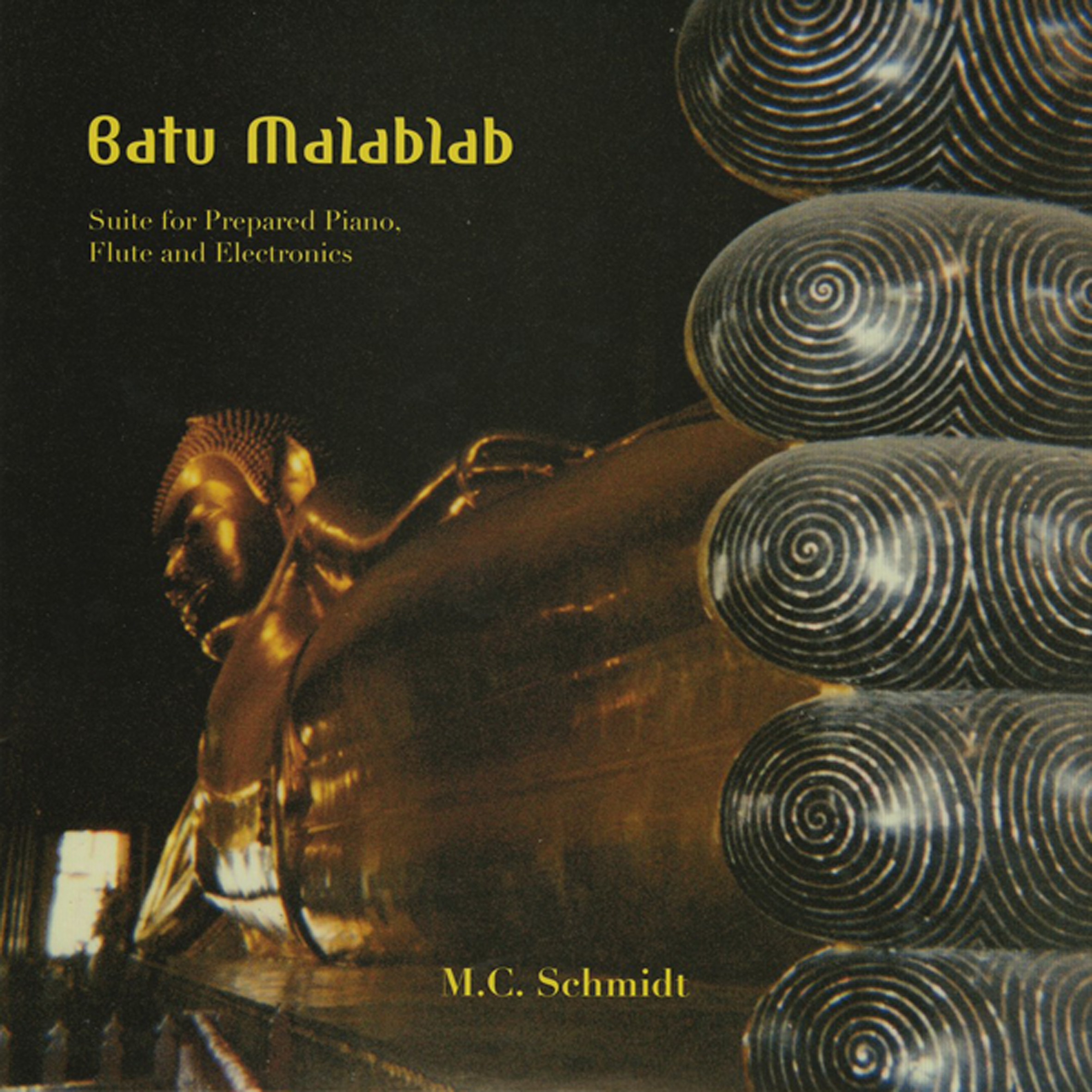 Matmos has long been one of the most uniquely outré and inventive projects around, so it follows that Schmidt's debut solo album would be similarly bizarre and Batu Malablab is certainly that (and more).  In fact, it actually turned out to be far stranger and more challenging than I ever could have imagined: I was expecting a Can- or Harappian Night Recordings-style "ethnographic forgery," but what I got sounds much closer to an electronics-damaged imaginary soundtrack for a '60s Southeast Asian avant-garde theater piece.  Or what the Cannibal Holocaust soundtrack might have sounded like if jointly composed by Cage, Stockhausen, and Harry Partch.
Matmos has long been one of the most uniquely outré and inventive projects around, so it follows that Schmidt's debut solo album would be similarly bizarre and Batu Malablab is certainly that (and more).  In fact, it actually turned out to be far stranger and more challenging than I ever could have imagined: I was expecting a Can- or Harappian Night Recordings-style "ethnographic forgery," but what I got sounds much closer to an electronics-damaged imaginary soundtrack for a '60s Southeast Asian avant-garde theater piece.  Or what the Cannibal Holocaust soundtrack might have sounded like if jointly composed by Cage, Stockhausen, and Harry Partch.
Megaphone/Knock 'em Dead
"Batu Malablab" is a Malay phrase that means "mixed stone."  Aside from that, the only relatively concrete thing that I can say about this album is that it was made using a prepared piano, flute, and electronics and that it consists of two side-long pieces ("Lowland" and "Mountain").  Everything else about Batu Malablab, however, is thoroughly disorienting, inexplicable, and synapse-frying.
I suppose the "Lowlands" side is the more straightforward half of the album, at least initially.  However, it is only straightforward in the sense that it sounds fairly unambiguously like a human improvising on a broken or self-constructed gamelan.  To Schmidt's credit, he does a spectacular job weaving that illusion–were it not for the recording quality, I could easily be convinced that "Lowland" was some kind of Nonesuch Explorer field recording from a remote mountain temple untouched by the modern world rather than a white guy in Baltimore with a piano.  After about four minutes though, things start to go off the rails into uncharted terrain, as Schmidt's plinking and clanking becomes more erratic and is joined by a somewhat dissonant flute, some reverberating clacking, an insectoid whine, and something that sounds like a dying trombone ensemble.  Equally wrong-footing is the structure (or anti-structure): "Lowlands" never quite builds or coheres into something more substantial: it only become more alien, ominous, and disjointed as it unfolds, reaching a deranged anti-crescendo when the eerie synths and vocals appear near the end to evoke a bizarre mood of retro-futurist space-horror.
The "Mountain" side opens with a return to clanking faux-gamelan of "Lowlands," this time embellished with some jungle-type field recordings and a queasy haze of uneasily harmonizing flutes.  Gradually, a menacing rumble intrudes, along with some extremely artificial and space-y vintage synthesizer textures and we are officially back in Crazyville once again.  The transition is more rapid and dramatic this time though, as the piece has completely transformed into some kind of hallucinatory industrial drone/spoken word piece with a woozy backing choir of angelic voices by the six-minute mark. (Un)naturally, it only gets stranger from there, dissolving into a brainsick miasma of backwards vocals, spaced-out electronic blurts and whooshes, and chirping birds before again reverting to its junkyard-gamelan plinking and plonking origins.  I think there might also be some excited monkeys thrown in for good measure.
I do not know that I would necessarily describe Batu Malablab as a great (or even good) album, but it definitely succeeds spectacularly at something and normal quality standards do not seem to apply to whatever it is that has happened here.  It is hard to say exactly what that is though.  The one certainty is that Batu Malablab is the most "difficult" album that I have heard in a very long time, as well as the most "outer limits" vision that I have yet heard from an otherwise sane person.  Also, I suppose Schmidt's most admirable feat with this album is that he boldly and completely avoided anything resembling the here and now, as well as anything resembling straight-up multi-cultural burgling or half-assed pastiche.  Instead, Batu Malablab maniacally careens back-and-forth between an imagined exotic past and a vintage sci-fi vision of the future with no stops in between, resulting in a probable lock for the single most alien and zeitgeist-defying release of 2015.
 
Read More
- Administrator
- Albums and Singles

The trajectory of Alex Cobb's music over the course of the last decade could be viewed as a distillation of tone and atmosphere to arrive at Chantepleure, his most optimistic and sanguine musical statement to date. The album, however, was created at a time of heartache, isolation and emotional upheaval and acts as a balm of tender tones where abstract guitar lines circle and suspend in a kind of refined elegance. Noise, once a hallmark of Cobb’s music, has not been entirely removed, but manifests here in a different form.
A delicate dissonance shades the edges of the these four tracks, providing textural color and gorgeously offsetting the lush nature of the music. Even in short spans, this approach yields substantial results. At three and a half minutes, “Disporting with a Shadow” pulls back the curtain just enough to let flecks of natural guitar notes and traces of alluring melody seep into the mix. The album closes with the side-long “Path of Appearance,” a cathartic composition that is best described as a poem of overtones which, like the rest of the album, is sourced from electric guitar and minimal effects but feels more akin to the sun stretching to fill all corners of a darkened room. A testament to sonic refinement, a way of coping, an exciting step forward for an established artist—the minimalist Chantepleure is all of these things.
More information can be found here.
Read More
- Administrator
- Albums and Singles
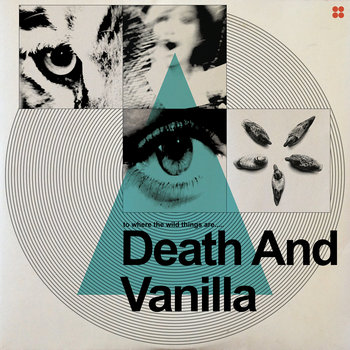
Formed in Malmö, Sweden by Marleen Nilsson and Anders Hansson, Death And Vanilla utilise vintage musical equipment such as vibraphone, organ, mellotron, tremolo guitar and moog, to emulate the sounds of '60s/'70s soundtracks, library music, German Krautrock, French Ye-ye pop and 60s psych. They revel in the warmth of older analogue instruments to create a more organic sound, each loose wire and off-kilter noise adding to the rich atmosphere.
After a handful of successful releases including a debut EP in 2010, their self-titled LP in 2012 - which sold out on pre-order - and a beautifully designed 7" single, the experimental pop duo were invited to compose a live soundtrack for the classic horror film, Vampyr (1932), for the Lund Fantastisk Film festival in Lund. Now, newly signed to Fire, the band return with To Where The Wild Things Are. Named after the Maurice Sendak children's book, the album is comprised of pop music with a wild, dreamy and experimental edge, celebrating imagination and the ability to travel to stranger recesses of the mind.
Where the Wild Things Are starts off with some of the most "pop" songs they've ever recorded, typified in the sweet and melodramatic "Arcana," and the classic pop inspired "Time Travel." Like Sendak's book of the same name, the album then proceeds into stranger and stranger territory, resulting in some of the most experimental material Death And Vanilla have produced, such as the six-minute "Something Unknown You Need to Know" and the machine-like, surf-guitar track "The Hidden Reverse."
The band recorded the new album themselves in their rehearsal space, using just one microphone - a 70's Sennheiser - which they bought at a flea market for a tenner. It is this unconventional recording process that gives Death And Vanilla their unique personality; using a trial-and-error approach to recording has rewarded the album with a strangeness that would not have otherwise been achievable.
Creating deliciously enticing soundscapes, full of moody Moogs, swirling melodies and breathless vocals, their influences on To Where the Wild Things Are are apparent and diverse, ranging from Ennio Morricone to Scott Walker, Tom Dissevelt to Norman Whitfield, The Zombies to Sun Ra, and Bo Hansson to The BBC Radiophonic workshop.
"Their sound is woozy, evocative and blatantly in thrall to the kaleidoscopic sounds of Broadcast, the BBC Radiophonic Workshop, Mazzy Star and 60's sci-fi soundtracks. It's beautifully listenable; a veritable tapestry of warm sounds to soothe and refresh. Their previous records have been popular but this could send them into the stratosphere" Norman Records
"Death And Vanilla's sound is like an elaborate dreamscape composed of foggy visions and mind-altering notions." Redefine Magazine
"Death And Vanilla are a Swedish haunted-pop duo who have found themselves caught in the vortex of retro-futurism circa 1969... they've got a good grip on the baroque psychedelia of the United States Of America and Free Design," Aquarius Records
More information can be found here and here.
Read More
- Administrator
- Albums and Singles
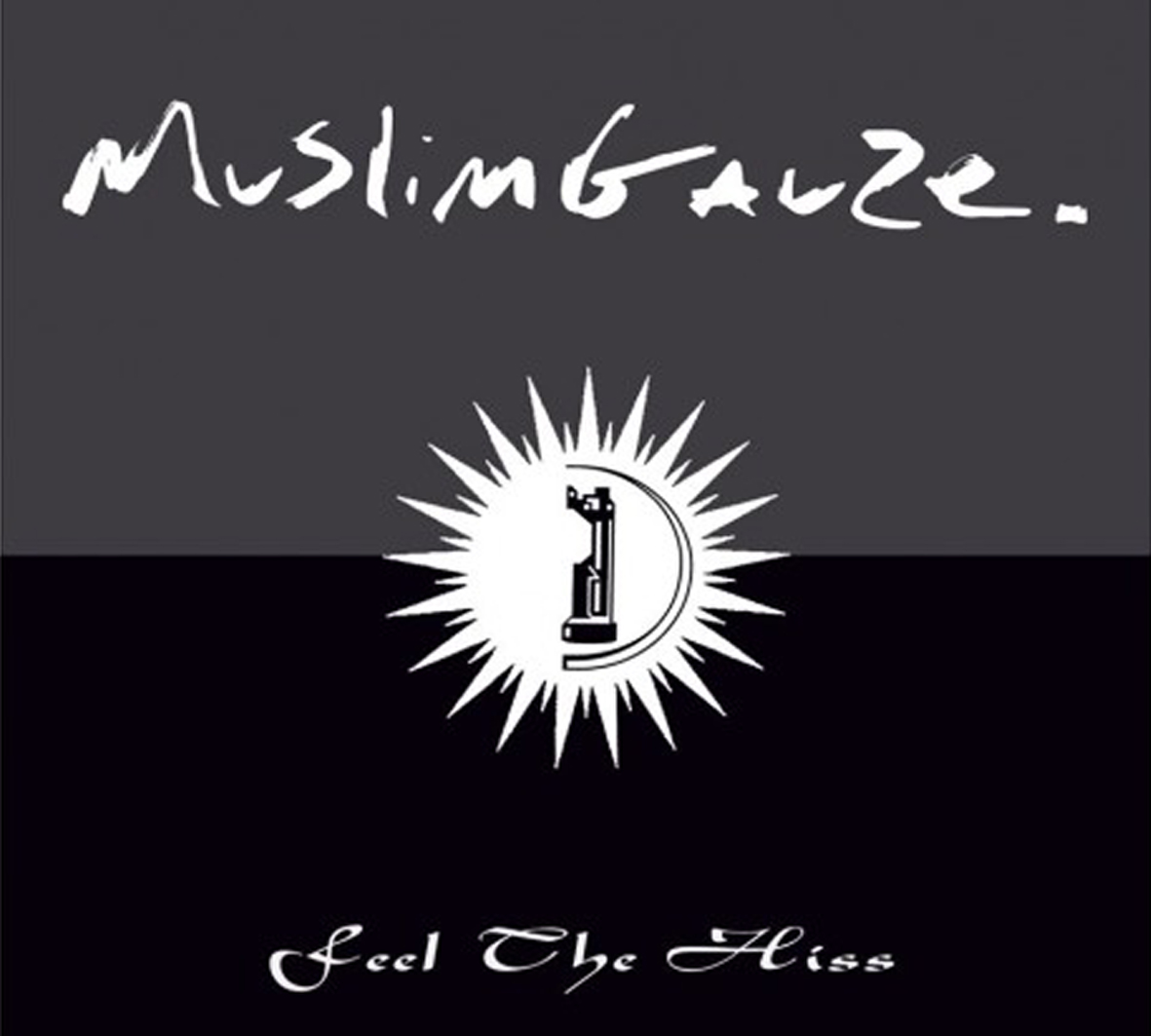 I had been doing an excellent job of ignoring the constant trickle of unnecessary Muslimgauze vault scrapings for the last few years, but the surprising amount of excitement surrounding this one enticed me into grudgingly giving it a chance.  I am glad I did, as Feel The Hiss's mingling of heavy dub and sound collage is probably my favorite of Bryn Jones' myriad stylistic threads.  The album still falls prey to the usual "Muslimgauze vault" curse of sounding like endless slight variations of the same goddamn song, but in this case the song being endlessly replicated is actually good enough to warrant it.  This is the best Muslimgauze album to surface in a long time.
I had been doing an excellent job of ignoring the constant trickle of unnecessary Muslimgauze vault scrapings for the last few years, but the surprising amount of excitement surrounding this one enticed me into grudgingly giving it a chance.  I am glad I did, as Feel The Hiss's mingling of heavy dub and sound collage is probably my favorite of Bryn Jones' myriad stylistic threads.  The album still falls prey to the usual "Muslimgauze vault" curse of sounding like endless slight variations of the same goddamn song, but in this case the song being endlessly replicated is actually good enough to warrant it.  This is the best Muslimgauze album to surface in a long time.
Feel The Hiss is a rather unique entry in Staalplaat’s ongoing vault-clearing/reissue campaign, as it is basically a complete album that Jones never got a chance to put the finishing touches on.  He recorded these nine pieces live to tape, labeled it "Zilver tracks," then never revisited them.  Unexpectedly, that "unfinished" aspect is one Hiss's biggest selling points, as these pieces have a raw immediacy that would probably have been smoothed over if Jones had gone through his normal production regimen.  Also, the degree of unfinishedness is quite a lucky one, as Hiss does not feel particularly lo-fi, nor does it feel like anything is missing.  Instead, everything just feels a lot sharper and crisper than it normally would, particularly the many prominent snatches of dialogue and field recordings strewn all over the album.  I suspect that a "finished" version would have pushed the sound collage elements much deeper in the mix and punched up the bass, if other Muslimgauze albums are any indication.  I suppose that would be cool too, but less so: I am very much a fan of this "garage rock" version of Jones' artistry.
While there are ostensibly nine (untitled) pieces comprising Hiss, there are actually only three distinct and significant ones due to the distinctly Jones-ian repetition of the core music, though they are thankfully all long enough to carry the album.  There is not a hell of a lot distinguishing the three variations from one another in a concrete sense, as all are basically built upon an unchanging bass line and a slow dub-reggae pulse embellished with a buzzing tanpura drone and an occasional kanun loop (Jones kept the music fairly minimal and laid-back with this one).  Despite the extreme similarities, however, the minor differences between the bass lines and the tempos still provide each of the three discrete pieces with their own individual feel.
The best of batch is probably "Zilver One," as it boasts the most tense and propulsive rhythm.  That kind of makes all the difference with this material, as the field recordings and dialogue in the foreground are always a chaotic and mysterious collage of angry voices, non-angry voices, prayers, singing, interviews with snipers, sudden crashes, pouring water, clattering metal, monkeys, birds, trains, and whatever the hell else Bryn felt like piling on.  It is all very compelling and deliciously disorienting and evocative, but it is also very abstract, unmelodic, and occasionally harsh, so it works best when bolstered by an appropriately strong and hypnotic groove.  "Zilver One" hits that mark most successfully.
"Zilver Two" and "Zilver Eight" combine to constitute another distinct piece, differing primarily from the first piece by being significantly slower.  While that sacrifices some momentum, the trade-off is an appealing one, as it leaves more space and shifts the focus more strongly to Jones' hallucinatory web of overlapping voices and street sounds.  The third distinct piece is kind of a trilogy, as songs four through six essentially blur together into a single work that stretches for nearly 20 minutes.  Again, this one is slowed down to a druggy reggae crawl, which again allows Bryn to make the most of his arsenal of voices, which in this case includes a lot of snatches of devotional singing that overlap and pan around pleasingly.  The best part, however, comes in the latter half, as Jones allows an ominously quavering drone to take center stage to mesmerizing effect (which, of course, makes the occasional bursts of shouting, crashing, and door-pounding seem even more meaningful and startling).
I suppose the sole real flaw with Feel The Hiss is that the remaining three pieces legitimately do feel unfinished, particularly "Zilver Three," which is little more than a beat and would have me leveling some serious "shameless Vatican Shadow rip-off" accusations had it not been recorded back in 1995.  On the bright side, it is only two minutes long and serves as a palette cleanser of sorts before the next substantial piece.  The other two non-songs are even shorter, but range from a recording of wind chimes ("Zilver Seven") to an apparent studio experiment where Bryn just messed around with echoing tablas and blasts of white noise until he lost interest ("Zilver Nine").  The rest of the album is great though and quite singular within the vast Muslimgauze discography (I have seen comparisons to the busier, more industrial Minaret Speaker album, but that album has a very different feel).  Feel The Hiss is as close to a straight-up dub album as anyone could hope for from Jones: spacious, uncluttered, unhurried, and swirling with an immersive world of curious sounds and snatches of dialogue.
Also, I do not think any sane person ever expects a perfect Muslimgauze album, as Bryn was by nature too restless and self-cannibalizing to dwell on a batch of songs long enough to make that happen.  Jones did not make as many albums as he did by worrying about sequencing or about putting his best foot forward at all times–he did it by tirelessly and obsessively moving forward to keep up with his endless flow of ideas.  Some albums captured him on a particularly inspired streak and some did not.  Feel The Hiss is most definitely one of the former.
 
Read More
- Administrator
- Albums and Singles
 Continuing a strong and consistent period of activity that began in earnest with the third installment of the Read & Burn series, the legendary band's 14th album is yet another high water mark in their expansive (and extremely impressive) discography. Primary songwriting duo Colin Newman and Graham Lewis provide 11 all new songs that blend their artistic obtuseness with catchy songwriting and melodies, the type of sound that made Chairs Missing and The Ideal Copy so brilliant. With Robert Grey's steady drumming and an expanded role for guitarist Matt Simms, Wire is full of moments that are weird, sometimes challenging, but always fascinating and memorable.
Continuing a strong and consistent period of activity that began in earnest with the third installment of the Read & Burn series, the legendary band's 14th album is yet another high water mark in their expansive (and extremely impressive) discography. Primary songwriting duo Colin Newman and Graham Lewis provide 11 all new songs that blend their artistic obtuseness with catchy songwriting and melodies, the type of sound that made Chairs Missing and The Ideal Copy so brilliant. With Robert Grey's steady drumming and an expanded role for guitarist Matt Simms, Wire is full of moments that are weird, sometimes challenging, but always fascinating and memorable.
The last album proper, 2013's Change Becomes Us, did not sit too well with me then and even now; two years and multiple listens later, I still have mixed feelings about it.The 2010’s shiny, polished incarnation of Wire taking on the confrontational Document and Eyewitness material, with all its bootleg quality harshness felt like an uncomfortable combination.Between that, and the slightly less-Wire Red Barked Tree, which at times was more reminiscent of a Colin Newman solo album, I was not sure what to expect coming into this one.
The first few songs reminded me more than a bit of Red Barked Tree, in that they were catchy and poppy songs, but not significantly memorable."Shifting" has Newman in his A Bell is a Cup era vocal style paired with light guitars and a nice melody.It is pleasant and enjoyable, but when it was over, it did not stick with me.The same goes for "Burning Bridges," with its mid pace and slightly processed vocals."Blogging" fares better with its killer Graham Lewis bass lead and synth flourishes, but lyrics rife with internet namedropping paired with Biblical references comes across as mix of clever and too clever.
The lyrically obtuse "In Manchester" is where the album picked up for me.The airy vocals and productions mixed with the faster pace immediately made me think, at least structurally, of "Follow the Locust."With Lewis taking the lead on lyrics on this album (although sadly he does not have any full length vocal performances here), "In Manchester" and many of the other songs are as lyrically abstract and surreal as the best of Wire’s output.The song blends nicely into the pulsing keyboards underscoring the sub-two minute "High," which has a similar structure, but a wonderful, infectious flow that simply ends too soon.
Released as a teaser for the album, "Joust & Jostle" is another winner in which the pacing of something like "Spent" or much of Pink Flag is flirted with, but in more of a restrained, pop-focused structure.On "Swallow" it seems like the band is looking back at "Heartbeat" as inspiration for the opening, though the finished product is not nearly as sparse or minimalist."Octopus" features an always-appreciated bit of Graham Lewis backing vocals, and has the lighter feel of the album, while still blending in some more dissonant elements both sonically and structurally.
I was most pleased by the two lengthy pieces placed roughly at the middle and end of the record."Sleep-Walking" hints at the sonic mystery and intrigue of "Ally in Exile" but with a more unconventional approach to the rhythmic structure compared to the remainder of the record, and an overall obtuse structure that was heavily sourced from improvisation.The concluding "Harpooned" takes on a more dirge-like pace, with an uglier guitar sound and a more sprawling arrangement that harkens more to the early days of Wire.While it is not as 'out there' as something like "Crazy About Love," it is the closest they have been in years.As I have mentioned in many previous reviews, I like my Wire weird and obtuse, while still being catchy and melodic, and both of these two manage to do that in a way that has been absent from recent albums.
samples:
 
Read More
- Administrator
- Albums and Singles
 Jon Borges, who also records as half of Pedestrian Depot, has chosen a project name that is only partially fitting for the sound he creates. While the Loneliness part is most fitting, given its isolated and depressing sound, the Everyday part maybe not so much. False Validations is a standout within a field of frigid waves and minimalist drone, the sound of beautiful depression.
Jon Borges, who also records as half of Pedestrian Depot, has chosen a project name that is only partially fitting for the sound he creates. While the Loneliness part is most fitting, given its isolated and depressing sound, the Everyday part maybe not so much. False Validations is a standout within a field of frigid waves and minimalist drone, the sound of beautiful depression.
This is clearly a "genre" record that is focusing on, and embracing a very specific style and sound.In this case that sound is a suite of beautiful, yet lonely stretches of sparse electronics.The sparseness can be highly misleading though:"What Doesn't Belong" has a lengthy and constant sound throughout, but Borges builds the piece layer by layer, going from a thin drone to a heavy, rich piece that emphasizes all ends of the sonic spectrum.
The 11 minute "Pretender" has Borges using its duration to build from a cold, shimmering passage of sound into a more complex, heavy composition that manages to be simple, yet gripping.As my attention drifted in and out on my first time through the record, each time it came back I was struck at how much the piece had evolved and expanded from only moments before."No Permission Sought or Given" is still a beautiful piece of sound, but darkness enters the picture here.What sounds almost like echoing crashes in the far off distance is blending with ominous, humming electronics.Here the loneliness is enhanced by an additional ambiguous bleakness, with just a hint of evil.
The final two songs are no less isolating, but become darker and more dissonant as they conclude the album."Stasis Interlude" is still just as minimalist as the rest, but a hint of distortion enshrouds the electronics, at times a passage resembling a jet plane flying far off in the distance.The concluding "The Source's Ghost" is pushed further into darkness during its few minutes.Compared to the remainder of the album, it has a murky, sinister sound at first, and then becomes richer, heavily filtered and layered while still staying powerfully simple.Borges again cautiously utilizes distortion and noise to give texture to the piece, without offsetting its lonely and beautiful sound.
False Validations is not an easy record, being two vinyl sides of sparse, yet lovingly treated electronics and minimalist structures.It is not abrasive or harsh as a whole, but it is also the type of record that requires attention to fully appreciate.When given the intention, it is a gripping and intense, if somewhat depressing experience that is, as suggested, best experienced alone in a dark room.
samples:
 
Read More
- Administrator
- Albums and Singles

Cascade and The Deluge are variations on the latest tape-loop and delay composition from the inimitable William Basinski. Cascade is the CD/Digital variant, and The Deluge is the vinyl LP companion.
In Cascade, a single ancient lilting piano tape loop repeats endlessly carrying one along in its tessellating current.
In The Deluge, the same loop is processed through a series of feedback loops of different lengths, creating a spiraling crescendo of overtones that eventually fades away to silence. In the denouement, a series of limpid piano loops leads to an urgent orchestral theme that builds and gradually dies.
More information can be found here.

Read More
- Administrator
- Albums and Singles

"I traced
the convolutions of
turf, laid out by men,
& made new windings with the mole
through undisturbed
barrows."
(Ronald Johnson, "The Book of the Green Man")
Belated Movements for an Unsanctioned Exhumation August 1st 1984 is Richard Skelton's second album as The Inward Circles, following 2014's Nimrod is Lost in Orion and Osyris in the Doggestarre. If his previous offering hovered "between the empyreal and the subterranean," Belated Movements is resolutely earthbound, beginning at ground level and slowly moving ever downward. The title is a reference to "Lindow Man," one of many bog bodies discovered in northern Europe in the twentieth century, and continues an archaeological theme which first surfaced in his 2013 *AR collaboration with Autumn Richardson, entitled Succession. In particular, it is the last composition from that album, Relics, which can now be seen as starting point for much of Skelton's future work as The Inward Circles. But whereas Relics dealt with the pollen remnants submerged beneath tarns in the remote Cumbrian uplands, Buried Movements evokes a distinctly funerary landscape.
The first piece, "Petition for Reinterment" begins in familiar terrain - a slow, solemn string elegy - but it gently begins to disintegrate, to distend and rot, as if the music itself is being subsumed in soil and subjected to the natural cycles of decay and renewal. It is interesting to note that, whilst the skin of bog-bodies is often very well preserved, the bones undergo a process of decalcification - they literally dissolve from within. But exhumations such as "Lindow Man" are now artificially preserved behind museum glass, removed from time, from earthly contact and the inexorable progress of nature itself.
By contrast, the music of Belated Movements continues its inner transformation, and "To Your Fox-Skin Chorus" divulges more of its innards, revealing hitherto unheard melodic, rhythmic and textural material. The reference to fox-skin, borrowed from Edmund Gosse, alludes to the fox-fur arm-covering found on "Lindow Man," and, more obliquely, to the fox as a psychopomp - a soul guide - which formed a central theme in Skelton's recent Feræ Naturæ book and exhibition.
The album concludes with a further downward delving to the bones of animals long made extinct in England by humans: the wolf, lynx and bear - animals that haunt the popular imagination. Here the music is at its most restless and forbidding, as it ends with an urgent call - Canis, Lynx, Ursus: Awake, Arise, Reclaim. There is a palpable sense, with its almost unbearable crescendo, of a rising up, a return to the surface, and a threatening quiet.
BELATED MOVEMENTS FOR AN UNSANCTIONED EXHUMATION AUGUST 1ST 1984
by The Inward Circles
1. Petition for Reinterment
2. To Your Fox-Skin Chorus
3. Canis, Lynx, Ursus: Awake, Arise, Reclaim
Total Running Time : 60mins
More information can be found here.
Read More
- Administrator
- Albums and Singles
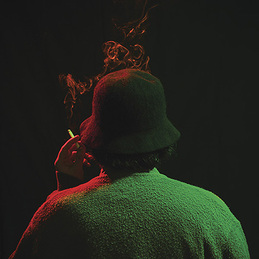
2015, and the silence has been broken with Simple Songs. Jim O'Rourke is ready to talk to you again. First, he wants you to know he's not dead...yet. But you're not, either-and really, what have you done lately? Certainly not made your first pop album since 2001-and even if you had, it probably wasn't any good. Meanwhile Simple Songs is more than just a first of anything since whenever! It's an amazing record of musical song entertainment-because Jim O'Rourke knows what he wants and how to get it...musically, that is. The rest of the world is still a mystery and a bottomless source of aggravation for the old boy. What do we care? We get a great new album out of it.
Yes, Simple Songs is an album of songs sung by Jim O'Rourke
All the way through! It has been ten years since Jim's voice rang out from a new album. What Simple Songs sounds like.... At this point, the range of sounds and songs that have turned Jim's head are numerous enough to have crushed together into something that is unmistakably his-the vast, glossy and glittering
O'Rourkian (yes, like Kervorkian) wall of sound. The music's got OCD quality, played so immaculately by so many instruments, and most of them by the creator's hand. This time's really the widest screen yet for Jim's popular song-style, truly breathtaking! Simple Songs was worked over, from source material to finished mix, for five years or more now.
Jim's writing is kinda rooted in the approach of Insignificance-frosted pop tarts that leave a darkly bitter aftertaste.
Let Simple Songs seep into your brain, as a musical expression on May 19th! Most of all though, don't hate this or he'll go away again for another decade!
Jim's got just what the world needs now-but who needs you?
More information is available here.
Read More

